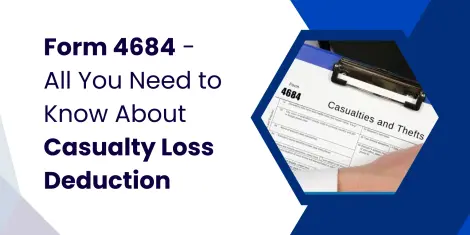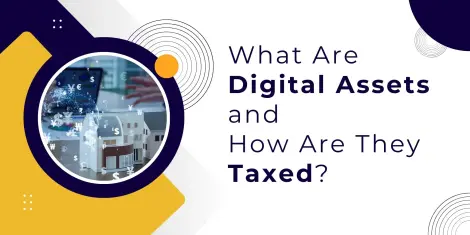Table of Contents
As tax season unfolds, the recent changes in the US tax laws can have a significant impact on various aspects of your filings. From deductions and credits to overall tax liability, the new modifications are set to transform the financial outcomes, making it imperative for you to stay abreast of potential alterations to the tax laws that pertain to your circumstances. Here’s all you need to know about recent tax law changes along with a thorough overview for effectively filing your taxes in 2024:
When Can I File My 2023 Return?
The IRS typically opens filing season in late January, accepting both paper and e-filed returns. Many tax preparation service providers start accepting completed returns in early January to get a head start on processing. That way, when the IRS systems officially open later in January, the returns are ready to be submitted right away. Even though the IRS won't start processing returns until their official start date, you can get your taxes done ahead of time with tax preparation services. Be sure to check the IRS website frequently in early January for the announcement of the official start date of the 2023 filing season.
What's the Deadline to File My 2023 Taxes?
The deadline to submit your 2023 federal income tax return is April 15, 2024 or October 15, 2024, with a tax extension.. Unlike some prior years, that date falls on a Monday in 2024, so there is no extra weekend day built in. The cutoff is midnight on April 15th, unless you file for extension. The first tax returns for the season are due on March 15, 2024. This deadline applies to partnerships, LLCs that are taxed as a partnership, and S corp tax returns.If you miss the deadline, you'll face penalties and interest on any taxes still due. Individual filers who live in certain federally declared disaster areas may qualify for extended filing deadlines.
What is the Standard Deduction Amount in 2023?
The standard deduction amounts that filers can claim instead of itemizing are adjusted annually to account for inflation. For 2023 tax returns, the standard deduction amounts are as follows:
- $13,850 for single filers, up $900 from 2022
- $27,700 for married couples filing joint returns, up $1,800 from 2022
- $20,800 for heads of households, up $1,400 from 2022
If you do not have enough itemized deductions to exceed the higher standard deduction amount for your filing status, claiming the standard deduction will maximize your tax benefit.
Tax Slabs for 2023 (Tax Filing in 2024)
|
Tax Rate |
Single |
Married filing jointly |
Married filing separately |
Head of household |
|
10% |
$0 to $11,000. |
$0 to $22,000. |
$0 to $11,000. |
$0 to $15,700. |
|
12% |
$11,001 to $44,725. |
$22,001 to $89,450. |
$11,001 to $44,725. |
$15,701 to $59,850. |
|
22% |
$44,726 to $95,375. |
$89,451 to $190,750. |
$44,726 to $95,375. |
$59,851 to $95,350. |
|
24% |
$95,376 to $182,100. |
$190,751 to $364,200. |
$95,376 to $182,100. |
$95,351 to $182,100. |
|
32% |
$182,101 to $231,250. |
$364,201 to $462,500. |
$182,101 to $231,250. |
$182,101 to $231,250. |
|
35% |
$231,251 to $578,125. |
$462,501 to $693,750. |
$231,251 to $346,875. |
$231,251 to $578,100. |
|
37% |
$578,126 or more. |
$693,751 or more. |
$346,876 or more. |
$578,101 or more. |
What are some Key Law Changes and Implications in 2023?
Several key tax provisions aimed at families and lower-income filers that were temporarily expanded under COVID relief bills have now reverted back to pre-pandemic levels for 2023 returns. These recent law changes can have a significant impact on your tax refund or amount due, so it is important to understand what has changed:
Child Tax Credit
For tax years 2021 and 2022, this credit provided families up to $3,600 per child under age 6 and $3,000 per child ages 6 to 17 under enhanced COVID relief rules. For 2023, the child tax credit has reverted to $2,000 per qualifying child under 17. In addition, the credit is no longer fully refundable for most taxpayers. Prior to the pandemic, only $1,400 per child was refundable. For 2023 returns, that refundable portion has been increased slightly to $1,600 per child. However, several families will no longer receive the full credit amount as an income tax refund.
There are no more advanced monthly payments for the Child Tax Credit. Families could get half their estimated credit paid in advance monthly installments during the pandemic. In 2023, the full credit can only be claimed when filing your tax return. The income limits to receive the full credit have also been changed. For 2023, the credit is phased out at $200,000 for single filers and $400,000 for married couples filing jointly.
Child and Dependent Care Credit
For 2021, the child and dependent care credit was made fully refundable and increased to 50% of eligible expenses up to $8,000 for one child/dependent or $16,000 for two or more. That meant a maximum credit of $4,000 or $8,000 per family. For 2023, the credit calculation reverted to paying up to 35% of $3,000 in eligible expenses for one dependent or up to 35% of $6,000 in expenses for two or more dependents. That reduces the maximum credit to $1,050 or $2,100. The credit begins phasing out at a lower income threshold of $15,000 and it is no longer fully refundable for most taxpayers.
Earned Income Tax Credit
One expanded tax provision that remains in place is the enhanced Earned Income Tax Credit (EITC) for low to moderate income families and workers. For 2023, the maximum EITC varies from $7,430 for a married couple with at least 3 qualifying children to $560 for workers without children. The credit amounts and income ranges to receive the EITC are still much higher than pre-pandemic. However, the minimum eligibility age for workers without dependents has been raised from 19 to 25 years old (and up to age 65 only).
American Rescue Plan Provisions
1099-K Reporting Threshold
The pandemic tax change that has not taken effect yet is the reduction in Form 1099-K reporting requirements. Starting in tax year 2022, third-party networks like PayPal and Etsy would need to issue 1099-Ks for business sellers with over $600 in gross annual payments (down from $20,000 and 200+ transactions previously). However, this change has been postponed twice by the IRS and will now start in 2024 at the earliest. The threshold remains at over $20,000 in gross payments for 2023 tax reporting purposes.
Inflation Reduction Act Tax Changes
The Inflation Reduction Act passed in August 2022, introduced important new and expanded tax credits and deductions to help consumers and businesses adopt more energy-efficient and environmentally friendly practices. Several of these tax law changes took effect starting in the tax year 2023, these include:
Solar Energy Credit- This credit applies to residential solar installations like rooftop panels or solar water heaters. For systems placed in service after December 31, 2021, through December 31, 2032, the credit has increased from 26% to 30% of qualified solar energy system costs. There are no annual caps. This can reduce the payback period for installing home solar panels.
Home Energy Efficiency Credit- For tax year 2023, the credit is 30% of the cost of qualified energy efficiency home improvements, up from 10% previously.The maximum lifetime limit of $500 has been eliminated. Now you can claim up to $1,200 per year for key upgrades like adding insulation, energy efficient windows and doors, or certain high efficiency heating and cooling systems. An additional $2,000 annual credit is available for installing qualified heat pumps or biomass stoves or boilers.
Electric Vehicle Credit- The electric vehicle tax credit is now more accessible to consumers. For EVs purchased starting January 1, 2023, the credit increases to up to $7,500 for eligible models. Previously it began phasing out after an automaker sold over 200,000 EVs. Now the phaseout threshold is raised to 600,000 vehicles per company. In 2023, a new credit of up to $4,000 for buying used EVs is available . It covers 30% of the sale price up to $25,000 for a qualifying used vehicle.
Energy Efficient Commercial Buildings Deduction- Businesses can also benefit from an extension of the 179D tax deduction for installing approved energy-efficient systems and lighting in commercial buildings. Now the deduction of up to $1.80 per square foot applies to costs incurred through 2032, whereas it was only through 2017 previously. Energy usage needs to be reduced by over 25% to qualify for this credit.
Student Loan Interest Deduction
After being paused due to the COVID-19 pandemic, federal student loan payments are scheduled to resume starting in October 2023. As a result, many borrowers will once again be able to deduct up to $2,500 of student loan interest paid during 2023 when they file their taxes in 2024. This above-the-line deduction applies to interest paid on qualified student loans that were used to pay for higher education expenses. Both required and voluntary interest payments made during the 2023 tax year can qualify for the deduction. Just be sure to have documentation like Form 1098-E from your student loan servicer to substantiate the interest amount you paid. This deduction can help offset a portion of the interest cost on your student loans.
Which other Adjustments Can Impact my Taxes?
Retirement Contribution Limits-The amount you can contribute to tax-advantaged retirement such as the 401(k) has been increased to $22,500 for the year, up from $20,500 in 2022. If you are age 50 or older, you can make an extra $7,500 "catch-up" contribution to your 401(k) for a total of up to $30,000. The annual limit for contributing to traditional or Roth IRAs have also been increased to $6,500 for 2023, with individuals 50 and over able to add an extra $1,000 catch-up contribution for $7,500 total.
Health Savings Account (HSA)- You can contribute up to $3,850 to an HSA account for 2023 if you have self-only high deductible health plan coverage. For family HDHP coverage, the HSA contribution limit has increased to $7,750 for the tax year.
Flexible Spending Account (FSA)- For 2023, you can elect to contribute up to $3,050 to a health care FSA through an employer plan. This is up $100 from 2022. The carryover limit is now $610 if your employer plan allows it.
Standard Mileage Rate- The business standard mileage rate for operating an automobile for business use in 2023 is 65.5 cents per mile driven, up 4 cents from the rate for 2022. The medical travel mileage rate is 22 cents per mile, and the charitable volunteer mileage rate is 14 cents.
Adoption Credit- The maximum credit for qualifying expenses related to adoption rose from $14,890 in 2022 to $15,950 in 2023. Credits over your tax liability are refundable.
Annual Gift Tax Exclusion- For 2023, the annual exclusion amount you can give someone cash or gifts without owing gift tax increased to $17,000, up from $16,000. For married couples filing jointly the amount doubles to $34,000.
What Else Should I Consider while Filing my Taxes in 2023?
Unemployment Income Reporting- If you collected unemployment insurance benefits in 2023, you'll receive a Form 1099-G showing the amount. While unemployment income is taxable, make sure the amount on your 1099-G matches the amount you received before reporting it.
Business Expense Deductions- If you earned any self-employment or side job income in 2023, be sure to gather documentation for all allowable business expense deductions you can take to reduce your taxable income. Deductible expenses include mileage, home office utilities, advertising, fees, licenses, supplies, and other day-to-day expenses.
What tax forms and documents should I gather?
Organizing these key tax forms and financial records can make your filing more simple and accurate:
- W-2 forms - Report wages earned and taxes withheld from employers
- 1099-NEC - Reports non-employee compensation or self-employment income
- 1099-G - Reports unemployment benefits received
- 1099-DIV/1099-INT - Reports dividends or interest earned
- 1099-MISC - Reports rental income or other miscellaneous income
- 1099-K - Reports payment card transactions or third-party network transactions over $20,000
- 1099-SA - Documents health savings account distributions
- 1099-R - Reports IRA or retirement plan distributions
- 1099-B - Reports stock sales
- Receipts supporting deductions - Such as charitable donations, medical expenses, mortgage interest, property taxes, business expenses
- Bank statements & credit card transaction histories
To Sum it Up
Filing taxes in 2023 can be complicated, especially with constant changes to US tax codes, forms, and regulations. As you prepare your tax return, be sure to gather all your income documents, understand deductions you can claim, and review credits you may be eligible for. Consulting a tax professional like NSKT can help you navigate new tax laws and maximize your available credits and deductions. NSKT offers personalized tax preparation services to help you file taxes accurately and efficiently. Whether you need assistance with documentation, understanding new tax US legislation, or want to ensure compliance, the tax experts at NSKT are here to help with your tax situation for maximized returns.
The information provided here is for general informational purposes only and should not be construed as professional advice. The tax-related content on this blog is based on our understanding of tax laws as of the date of publication and may be subject to change.







